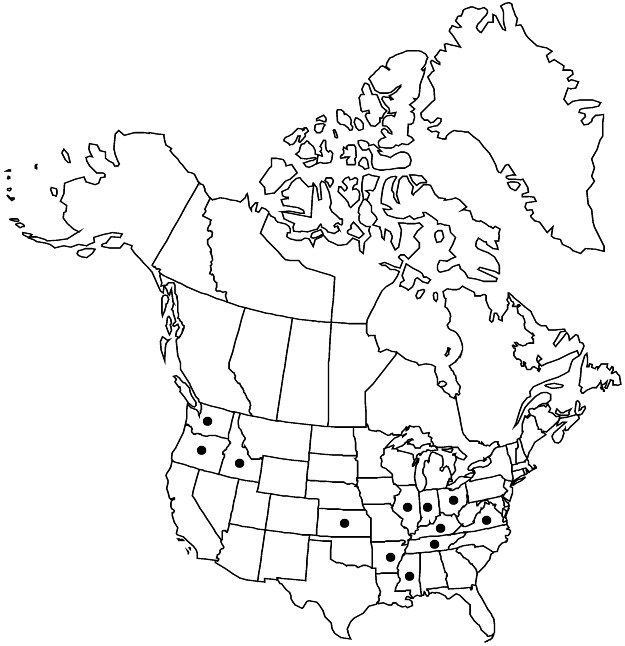Difference between revisions of "Cerastium dubium"
Fl. Maine et Loire ed. 2, 1: 267. 1838.
FNA>Volume Importer |
FNA>Volume Importer |
||
| Line 11: | Line 11: | ||
|name=Stellaria dubia | |name=Stellaria dubia | ||
|authority=Bastard | |authority=Bastard | ||
| + | |rank=species | ||
|publication_title=Suppl. Fl. Maine-et-Loire, | |publication_title=Suppl. Fl. Maine-et-Loire, | ||
|publication_place=24. 1812 | |publication_place=24. 1812 | ||
| Line 17: | Line 18: | ||
|name=Cerastium anomalum | |name=Cerastium anomalum | ||
|authority=Waldstein & Kitaibel | |authority=Waldstein & Kitaibel | ||
| + | |rank=species | ||
}} {{Treatment/ID/Synonym | }} {{Treatment/ID/Synonym | ||
|name=Dichodon viscidum | |name=Dichodon viscidum | ||
|authority=(M. Bieberstein) Holub | |authority=(M. Bieberstein) Holub | ||
| + | |rank=species | ||
}} | }} | ||
|hierarchy=Caryophyllaceae;Caryophyllaceae subfam. Alsinoideae;Cerastium;Cerastium dubium | |hierarchy=Caryophyllaceae;Caryophyllaceae subfam. Alsinoideae;Cerastium;Cerastium dubium | ||
| Line 47: | Line 50: | ||
-->{{#Taxon: | -->{{#Taxon: | ||
name=Cerastium dubium | name=Cerastium dubium | ||
| − | |||
|authority=(Bastard) Guépin | |authority=(Bastard) Guépin | ||
|rank=species | |rank=species | ||
| Line 63: | Line 65: | ||
|publication year=1838 | |publication year=1838 | ||
|special status= | |special status= | ||
| − | |source xml=https://jpend@bitbucket.org/aafc-mbb/fna-data-curation.git/src/ | + | |source xml=https://jpend@bitbucket.org/aafc-mbb/fna-data-curation.git/src/f50eec43f223ca0e34566be0b046453a0960e173/coarse_grained_fna_xml/V5/V5_173.xml |
|subfamily=Caryophyllaceae subfam. Alsinoideae | |subfamily=Caryophyllaceae subfam. Alsinoideae | ||
|genus=Cerastium | |genus=Cerastium | ||
Revision as of 21:51, 16 December 2019
Plants annual, taprooted. Stems erect, many-branched from base, 10–40 cm, minutely viscid-glandular; small axillary tufts of leaves usually absent. Leaves not marcescent, distal sessile, proximal spatulate; blade linear or linear- lanceolate to linear-oblong, 10–30 × 1–4 mm, apex obtuse to subacute, glabrous or sparsely and minutely viscid-glandular. Inflorescences lax, 3–21(–30)-flowered cymes; bracts narrowly lanceolate, glandular-pubescent. Pedicels erect, slender, 2–15 mm, 0.5–3 times as long as sepals, glandular-puberulent Flowers: sepals ovate-lanceolate, 5–6 mm, margins narrow, apex acute to obtuse, minutely viscid-glandular; petals oblanceolate, 5–8 mm, 1.5 times as long as sepals, apex 2-fid; stamens 10; styles 3(–4). Capsules oblong-ovoid, straight, 8–11 mm, ca. 2 times as long as sepals; teeth 6, occasionally 8, erect to spreading, margins convolute. Seeds pale brown, ovate, 0.6 mm diam., tuberculate; testa not inflated. 2n = 36, 38.
Phenology: Flowering spring.
Habitat: Alien weed of cultivated land
Elevation: 200-800 m
Distribution

Ark., Idaho, Ill., Ind., Kans., Ky., Miss., Ohio, Oreg., Tenn., Va., Wash., s Europe, Asia.
Discussion
First collected in North America in 1966 in Washington, Cerastium dubium has now been gathered from many widely scattered sites, and appears to be spreading rapidly.